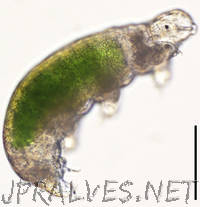
“Long-term survival has been one of the most studied of the extraordinary physiological characteristics of cryptobiosis in micrometazoans such as nematodes, tardigrades and rotifers. In the available studies of long-term survival of micrometazoans, instances of survival have been the primary observation, and recovery conditions of animals or subsequent reproduction are generally not reported. We therefore documented recovery conditions and reproduction immediately following revival of tardigrades retrieved from a frozen moss sample collected in Antarctica in 1983 and stored at -20 °C for 30.5 years. We recorded recovery of two individuals and development of a separate egg of the Antarctic tardigrade, Acutuncus antarcticus, providing the longest records of survival for tardigrades as animals or eggs. One of the two resuscitated individuals and the hatchling successfully reproduced repeatedly after their recovery from long-term cryptobiosis. This considerable extension of the known length of long-term survival of tardigrades recorded in our study is interpreted as being associated with the minimum oxidative damage likely to have resulted from storage under stable frozen conditions. The long recovery times of the revived tardigrades observed is suggestive of the requirement for repair of damage accrued over 30 years of cryptobiosis. Further more detailed studies will improve understanding of mechanisms and conditions underlying the long-term survival of cryptobiotic organisms.”
